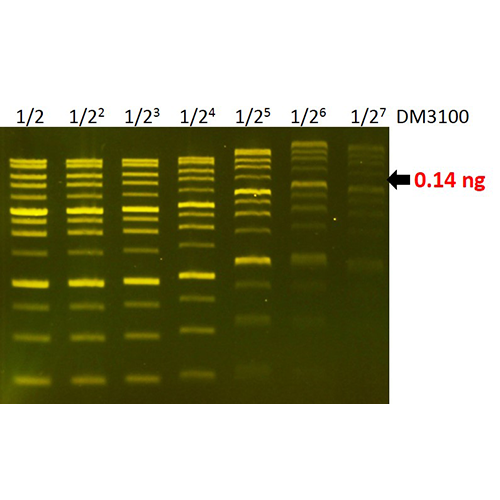The realm of molecular biology unravels mysteries hidden within the intricate structure of DNA. Scientists delve into this microscopic world to study genes, genetic disorders, and the building blocks of life itself. One crucial aspect of DNA analysis lies in visualizing DNA fragments through techniques like gel electrophoresis. Here, a specialized solution known as loading dye plays a pivotal role. But how much loading dye should be added to ensure accurate and reliable results? Let us embark on an enlightening journey to answer this question and unravel the complexities of DNA visualization.

Image: bocascientific.com
The Significance of Loading Dye in DNA Analysis
In the world of DNA analysis, loading dye serves as an indispensable reagent that facilitates the visualization of DNA fragments during gel electrophoresis. This indispensable solution comprises a dense blue or orange colorant, glycerol, and tracking dyes like xylene cyanol and bromophenol blue. When combined with the DNA sample, loading dye imparts a visible color, aiding in the identification and monitoring of DNA fragments during the electrophoresis process.
Determining the Optimal Loading Dye Concentration
Establishing the appropriate concentration of loading dye is paramount to ensure accurate and reliable DNA analysis. Excessive loading dye can distort the DNA fragments’ migration patterns, while insufficient dye may hinder visualization and compromise the accuracy of the results. Therefore, determining the ideal loading dye concentration becomes imperative.
Generally, a concentration of 1x loading dye is recommended for effective DNA visualization. This concentration provides sufficient density to distinguish the DNA fragments from the electrophoresis buffer without interfering with their migration. However, specific applications may necessitate adjustments to the loading dye concentration.
Factors Influencing Loading Dye Concentration
Various factors influence the optimal loading dye concentration, including:
-
DNA Concentration: The concentration of DNA in the sample can affect the loading dye requirement. Higher DNA concentrations may necessitate increased loading dye concentration to maintain visibility during electrophoresis.
-
Gel Percentage: The percentage of agarose gel used for electrophoresis also plays a role. Higher gel percentages require higher loading dye concentrations to ensure adequate migration of DNA fragments.
-
Electrophoresis Conditions: The voltage and time of electrophoresis can influence the loading dye concentration. Longer electrophoresis runs or higher voltages may warrant higher loading dye concentrations to compensate for diffusion and improved visualization.

Image: www.the-odin.com
Consequences of Incorrect Loading Dye Concentration
Deviations from the optimal loading dye concentration can lead to various consequences:
-
Inaccurate DNA Fragment Migration: Excess loading dye can impede DNA fragment migration, altering their apparent size and affecting analysis accuracy.
-
Poor DNA Visualization: Insufficient loading dye concentration may result in faint or indiscernible DNA bands, compromising visualization and interpretation.
-
Gel Distortion: Excessive loading dye can cause gel distortion, disrupting the migration pattern of DNA fragments and compromising analysis reliability.
How Much Loading Dye To Add To Dna
https://youtube.com/watch?v=m823Dye-CCA
Practical Tips for Loading Dye Usage
-
Dilute 10x Loading Dye: For general applications, use a 1x loading dye by diluting concentrated 10x loading dye with molecular biology-grade water.
-
Mix Thoroughly: Ensure thorough mixing of the loading dye with the DNA sample to achieve a homogeneous solution.
-
Avoid Excess Dye: Gradually add loading dye to the DNA sample, monitoring the color intensity. Avoid using excessive dye to prevent gel distortion.
-
Calibrate for Specific Conditions: Optimize the loading dye concentration for specific experimental conditions, considering DNA concentration, gel percentage, and electrophoresis parameters.
By adhering to these guidelines, you can effectively determine the optimal loading dye concentration for your DNA analysis experiments. Accurate visualization of DNA fragments empowers researchers to unravel the intricacies of the genetic code and delve deeper into the mysteries of life’s molecular foundation.